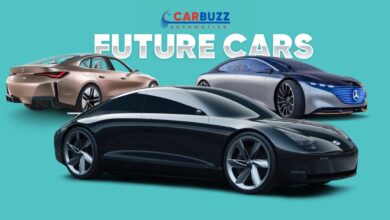Joby Aviation S4: The Game-Changing eVTOL Air Taxi Set to Revolutionize Urban Travel

Imagine hailing a quiet, emissions-free air taxi as easily as booking an Uber—this is the future Joby Aviation’s S4 promises to deliver. As one of the most advanced electric Vertical Takeoff and Landing (eVTOL) aircraft in development, the Joby S4 is designed to transform urban mobility, offering a faster, cleaner alternative to ground transportation.
With Toyota as a major investor and an exclusive partnership with Uber Air, Joby Aviation is poised to launch commercial air taxi services by 2025. Boasting a 150-mile range, whisper-quiet operation, and FAA certification progress, the S4 could soon become the Tesla of the skies.
1. What Is the Joby Aviation S4?
The Joby S4 is a five-seater (1 pilot + 4 passengers) eVTOL air taxi designed for urban and regional air mobility. Unlike flying car concepts that also drive on roads, the S4 is strictly an aircraft, optimized for short-to-medium-distance flights between vertiports.
Key Features:
✔ 150-Mile Range – Enough for city-to-suburb commutes.
✔ Top Speed of 200 mph (322 km/h) – Faster than helicopters.
✔ Near-Silent Operation – Quieter than traditional aircraft.
✔ Uber Air Partnership – Bookable via Uber’s app by 2025.
✔ Toyota-Backed Manufacturing – Scalable production expertise.
2. Design & Engineering: How Does It Work?
A. Flight Performance & Efficiency
-
VTOL Capability: Takes off and lands vertically like a helicopter, eliminating the need for runways.
-
Electric Propulsion: Six tilting rotors powered by high-energy-density batteries.
-
Noise Levels: 45 dB at 1,000 ft (quieter than a conversation).
B. Safety & Redundancy
-
Distributed Electric Propulsion: Multiple motors ensure redundancy.
-
FAA Part 135 Certification: Meets stringent aviation safety standards.
-
Emergency Autorotation: Can glide safely if power fails.
C. Autonomous Future?
While initially piloted, Joby is developing autonomous capabilities for future iterations.
3. Uber Air Partnership: The “Sky Uber” Vision
Joby’s exclusive deal with Uber Elevate means passengers will eventually book S4 flights via the Uber app. The plan includes:
-
Seamless integration with Uber’s ride-hailing platform.
-
“Skyport” networks at rooftops, airports, and transit hubs.
-
Price competitive with premium rides (long-term goal: cheaper than helicopters).
4. Why Toyota’s Backing Matters
Toyota’s $400 million investment brings:
-
Automotive-grade manufacturing for reliability.
-
Battery & lightweight material expertise.
-
Global supply chain access for mass production.
5. Target Markets & Use Cases
A. Urban Air Taxi Service
-
Airport-to-downtown transfers (e.g., 10-minute JFK to Manhattan flights).
-
Peak-hour congestion bypass in cities like LA, Tokyo, and London.
B. Emergency & Medical Logistics
-
Organ transport between hospitals.
-
Disaster response in hard-to-reach areas.
C. Private & Commercial Operations
-
Corporate shuttle services.
-
Luxury private hire (eventually competing with helicopters).
6. Competitive Landscape
| Feature | Joby S4 | Archer Midnight | Volocopter 2X |
|---|---|---|---|
| Range | 150 miles | 100 miles | 22 miles |
| Passengers | 4 + pilot | 4 + pilot | 2 |
| Autonomy | Piloted (future autonomous) | Piloted | Autonomous |
| Key Partner | Uber, Toyota | United Airlines | Dubai RTA |
Joby’s advantages: Longer range, Uber integration, and Toyota’s manufacturing muscle.
7. Challenges Ahead
A. Regulatory Hurdles
-
FAA certification (expected by 2025).
-
Urban air traffic management systems needed.
B. Infrastructure
-
Vertiport construction costs and zoning laws.
-
Charging network scalability.
C. Public Acceptance
-
Safety perceptions of new aviation tech.
-
Noise concerns (though S4 is exceptionally quiet).
8. The Road to 2025: What’s Next?
-
2024: Final FAA certification testing.
-
2025: Limited commercial launch with Uber Air in select U.S. cities.
-
2026-2030: Global expansion to Europe, Middle East, and Asia.
Conclusion: The Future of Flight at Your Fingertips
The Joby S4 isn’t just another eVTOL—it’s a turnkey solution for urban air mobility, backed by industry giants and designed for real-world scalability. By 2025, your Uber app might offer a “Fly” button alongside “Ride” and “Eats.”





